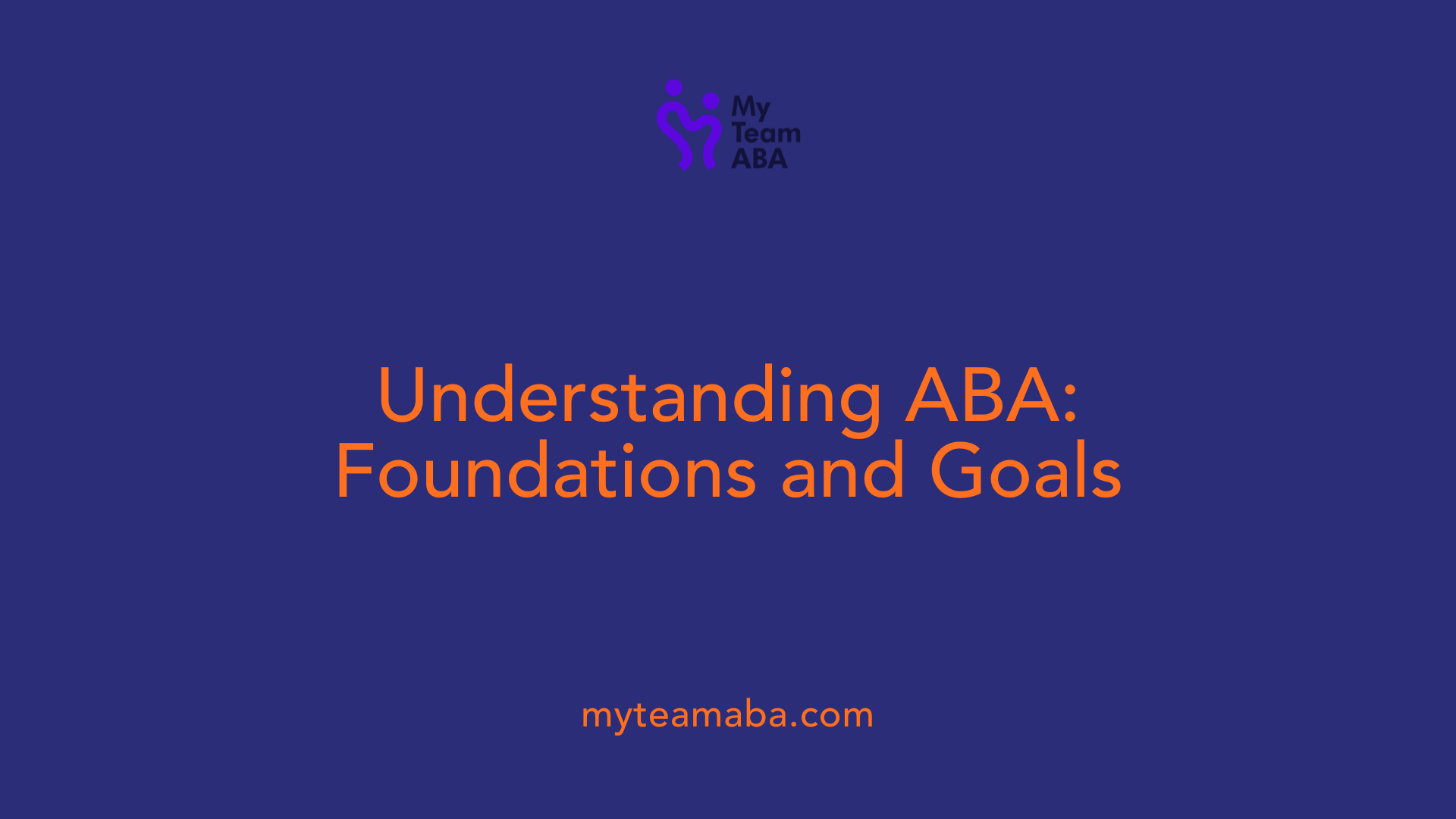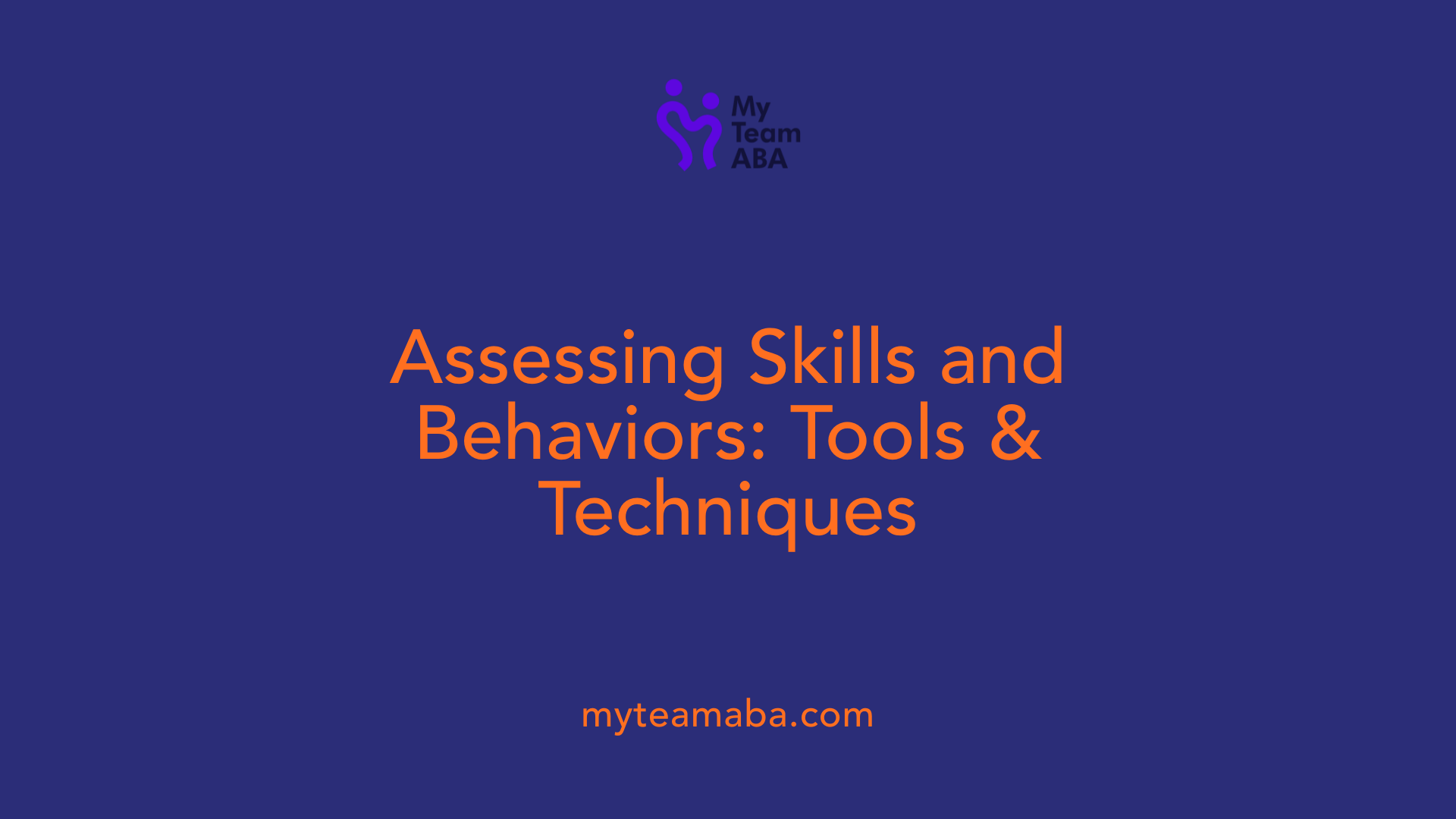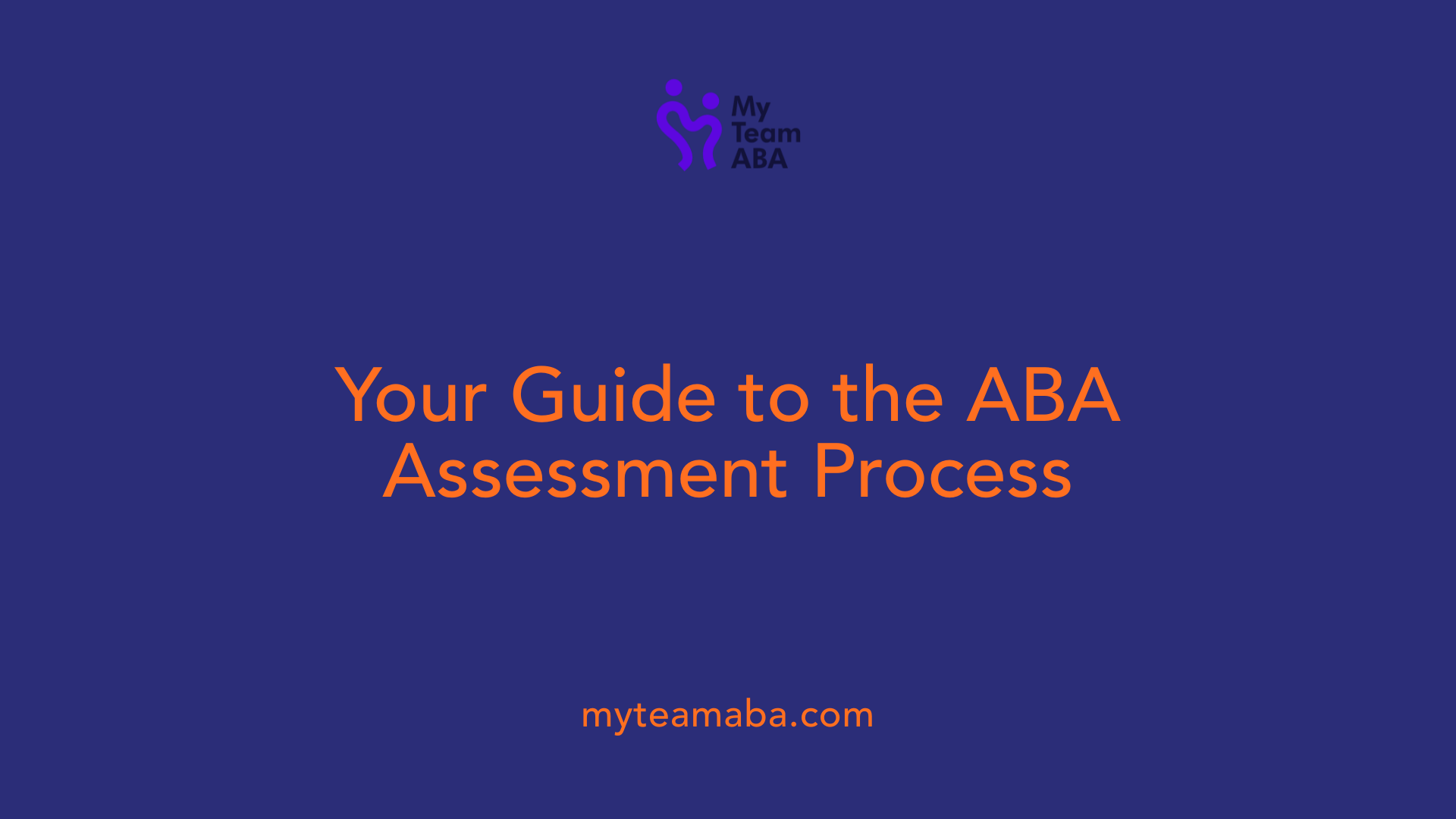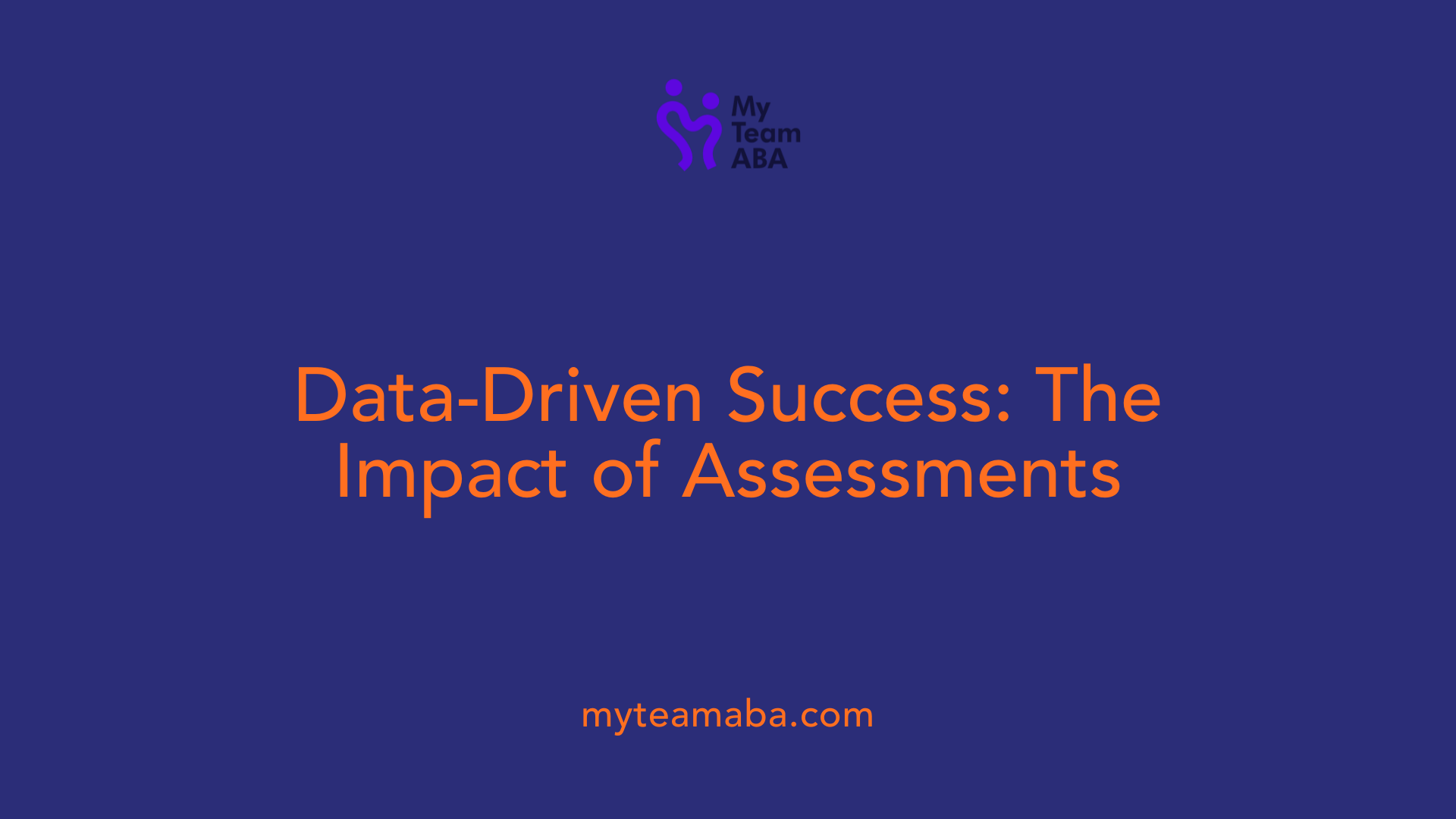Understanding the process of ABA therapy assessments
November 2, 2025
Demystifying ABA Assessments: A Foundation for Tailored Autism Interventions

Introduction to ABA Therapy Assessments
ABA (Applied Behavior Analysis) is an evidence-based method rooted in the science of learning and behavior. Central to its success is a thorough assessment process that informs personalized interventions. Understanding how these assessments are conducted, what tools are used, and their significance can empower caregivers, practitioners, and stakeholders to optimize therapy outcomes for individuals with autism or developmental challenges.
Overview of ABA Therapy and Its Purpose

What is ABA and what is its scientific basis?
Applied Behavior Analysis (ABA) is a scientifically-backed therapy that focuses on understanding how behavior works, considering how environmental factors influence actions and how learning takes place. Rooted in the principles of behaviorism, ABA uses systematic methods to analyze and modify behavior, making it an evidence-based approach widely recognized for its effectiveness.
What are the aims of ABA therapy?
The primary goal of ABA therapy is to help individuals develop helpful and adaptive behaviors while reducing those that are harmful or hinder learning. This involves encouraging skills like communication, social interaction, self-care, and academic performance.
How is ABA applied across different environments?
ABA can be delivered in various settings—including homes, schools, and community spaces. It involves trained therapists supervised by a Board Certified Behavior Analyst (BCBA), who ensures that interventions are tailored to each individual's needs and are implemented consistently.
Which skills does ABA target?
The therapy emphasizes a broad range of skills crucial for daily life. These include:
- Communication skills
- Social skills
- Self-care routines
- Academic skills
By focusing on these areas, ABA aims to foster independence and improve quality of life.
Why assessment plays a role in ABA?
Assessment is a cornerstone of effective ABA therapy. It involves detailed investigations of behaviors and skills through various methods such as observations, interviews, and standardized tools. These assessments help identify a person's current functioning level, triggers for challenging behaviors, and areas of strength.
How do assessments help in therapy planning?
They provide essential data that guides the creation of individualized intervention plans. Regular reassessment allows therapists to track progress, adjust goals, and refine strategies to maximize effectiveness.
What are the common tools used in ABA assessment?
Tools like VB-MAPP, ABLLS-R, and AFLS are used to evaluate verbal skills, social interactions, language, and daily living skills. These assessments help paint a comprehensive picture of a child's abilities and needs.
What steps are involved in the assessment process?
Initial contact and record reviews are followed by observations, interviews with caregivers, standardized testing, and sometimes, functional behavior assessments (FBAs). This thorough process ensures a deep understanding of individual behavior patterns and skill levels.
How does this process impact therapy development?
Data collected through assessments informs goal setting, intervention planning, and ongoing monitoring. It ensures that therapy is tailored specifically to the person’s unique profile, making interventions more effective.
What are the phases of an ABA assessment?
These include initial screening, detailed problem identification, pinpointing target behaviors, continuous monitoring, and reassessment. Each phase contributes to a comprehensive understanding and effective intervention planning.
What should families expect during an assessment?
Families can anticipate interviews, direct interactions with the individual, record reviews, standardized tests, and observation sessions. Active caregiver participation is often encouraged to gather accurate behavioral insights.
How does the assessment process support ongoing therapy?
Regular evaluation helps track progress, refine goals, and adapt strategies, ensuring continuous improvement and effective use of therapy hours.
Final notes on assessments and therapy planning
They act as the foundation for personalized ABA programs. The primary aim is to build on strengths, address challenges, and develop skills that promote independence. Through systematic data collection and review, ABA evaluates the effectiveness of interventions and guides ongoing development efforts.
| Aspect | Description | Additional Details |
|---|---|---|
| Purpose | Establish baseline, identify triggers, set goals | Supports targeted intervention planning |
| Techniques | Observation, interviews, standardized assessments | Tools include VB-MAPP, ABLLS-R, AFLS |
| Process | Screening to follow-up | Includes initial contact, observations, data analysis |
| Settings | Home, school, community | Flexibility tailored to individual needs |
| Outcomes | Improved skills, reduced problematic behaviors | Regular data review to track progress |
Tools, Techniques, and Methods Used During Assessments

What tools and techniques are used during assessments?
During ABA assessments, professionals utilize a variety of tools and methods to gather comprehensive information about an individual's behavior and skills. Standardized assessment tools such as VB-MAPP (Verbal Behavior Milestones Assessment and Placement Program), ABLLS-R (Assessment of Basic Language and Learning Skills-Revised), and AFLS (Adult Functional Living Skills) are commonly employed. These assessments evaluate language development, social skills, and functional abilities, providing quantitative data to inform treatment planning.
In addition to standardized tests, direct observation plays a crucial role. Therapists and analysts observe the individual in different settings to see how they behave in real-world conditions. This helps identify behavioral patterns, triggers, and environmental influences.
Caregiver interviews are also a vital component of assessments. Caregivers provide insights into the child's everyday behavior, developmental history, and strengths. This information helps paint a clearer picture of the individual’s capabilities and challenges, contributing to a more tailored intervention plan.
Functional Behavior Assessment (FBA) techniques are integral to understanding why certain behaviors occur. These assessments analyze antecedents—what happens before the behavior—, the behavior itself, and consequences—what follows afterward. This ABC analysis helps identify the functions or reasons behind behaviors, such as attention-seeking or escape.
Developmental assessments evaluate a person’s functioning across different domains like communication, motor skills, and social interaction, often involving standardized tools or checklists. Social-emotional assessments explore how the person manages emotions and interacts socially, which are essential for comprehensive planning.
Preference assessments determine what motivates the individual by identifying reinforcers. Techniques such as paired stimuli preference testing and Multiple Stimuli Without Replacement (MSWO) are popular. Paired stimuli involve presenting two items and observing which one the individual prefers. MSWO presents multiple items, and the individual chooses in succession, helping identify highly motivating rewards.
Common preference assessments used in ABA
Preference assessments are critical for selecting effective reinforcers, which are foundational to successful therapy. The most common methods include:
- Paired Stimuli (or Forced Choice) - Presenting two items and recording which one is selected.
- MSWO (Multiple Stimuli Without Replacement) - Presenting a set of items and removing the chosen item after each selection, to gauge preferences among multiple options.
These assessments are quick, engaging, and provide vital information to tailor reinforcement strategies.
How assessments help identify behavior functions
Understanding why behaviors occur is fundamental for designing effective interventions. Functional Behavior Assessments analyze antecedents, behaviors, and outcomes to uncover the reasons behind challenging behaviors. For example, if a child frequently tantrums when asked to do a task, an FBA might reveal that they are seeking attention or trying to escape from uncomfortable tasks.
By identifying the function of the behavior—whether it’s for gaining attention, avoiding demands, gaining access to preferred items, or self-stimulation—therapists can develop targeted strategies. This might include teaching alternative communication skills, modifying the environment, or changing reinforcement protocols.
In summary, assessment in ABA combines various tools and methods, from standardized tests to observational techniques, all aimed at understanding individual needs comprehensively. This process supports the development of personalized, effective intervention plans that promote learning and reduce problematic behaviors.
The Role of Assessments in Developing Personalized Treatment Plans

How do assessments contribute to developing personalized ABA therapy plans?
Assessments are fundamental in creating effective ABA therapy plans tailored to each individual. They gather comprehensive data by observing behavior, conducting interviews, and using standardized tests to understand a person’s unique strengths, challenges, and behavioral patterns. This detailed information forms the foundation for designing interventions that are specifically suited to the individual's needs.
Through detailed analysis of behaviors, triggers, and environmental factors, therapists can pinpoint the precise areas requiring support. This tailored approach ensures that therapy is not generic but focused on the person’s specific developmental profile, interests, and motivators, enhancing engagement and efficacy.
How is data used to set goals?
Data collected during assessments helps frame clear, measurable targets aligned with the individual's current skills and areas for improvement. The information enables practitioners to establish achievable steps that promote progress in critical areas such as communication, social interaction, self-care, and academic skills.
Goals are often set using frameworks like SMART—Specific, Measurable, Achievable, Relevant, and Time-bound—to guarantee clarity and focus. For example, data on communication delays can lead to a goal of improving vocabulary use by a certain number of words within a set period. Prioritizing goals based on assessment findings ensures that therapy addresses the most impactful behaviors and skills.
In what ways do assessments influence intervention strategies?
Assessment outcomes guide the development of personalized strategies by revealing behavioral triggers, learning preferences, and effective motivators. For instance, if assessments identify a particular antecedent that triggers challenging behavior, interventions can target altering environmental cues or teaching alternative skills.
Moreover, assessment data informs the choice of specific techniques such as positive reinforcement, task analysis, or social skills training. Tailoring strategies based on individual profiles enhances the likelihood of successful learning and behavior change.
Use of data for progress tracking and adjustments
Continuous data collection through methods like frequency counts, ABC data, or skill acquisition tracking enables therapists to monitor progress over time. Regular reviews of this data help identify what strategies are effective and where adjustments are needed.
If a particular intervention does not produce expected improvements, the data guides clinicians to modify or refine their approach. This iterative process ensures that therapy remains responsive to the individual’s evolving needs, leading to more meaningful and sustained progress.
| Assessment Focus | Data Collected | Influence on Treatment | Examples |
|---|---|---|---|
| Behavior Patterns | Observation notes, ABC data | Identifies triggers and functions of behaviors | Tailoring behavior intervention plans |
| Skills baseline | Standardized test scores, direct observation | Sets realistic goals and benchmarks | Communication, social skills targets |
| Preferences & Motivators | Preference assessments, interviews | Selection of motivating reinforcers | Reinforcer effectiveness, engagement |
| Progress Monitoring | Ongoing data collection, reports | Adjusts strategies for better outcomes | Modifying reinforcement schedules |
This systematic assessment and data-driven approach ensure that ABA therapy is highly personalized, targeting the right skills and reducing behaviors effectively, adapting as the individual progresses.
What to Expect During an ABA Assessment: A Step-by-Step Guide

Initial contact and scheduling
The process begins with family or caregivers reaching out to a qualified behavior analyst, often a Board Certified Behavior Analyst (BCBA), to schedule an initial assessment. The scheduling involves coordinating appointments at convenient times and deciding on the assessment environment, which could be at home, in a clinic, or in school settings.
Preparation required by caregivers and children
Before the assessment, caregivers are encouraged to gather relevant developmental history, previous reports, and records such as IEPs or medical evaluations. They should also prepare to share detailed information about the child's strengths, challenges, daily routines, and behaviors.
Children may need some preparatory activities to help them feel comfortable with the assessment process. This includes discussing what to expect, familiarizing the child with the environment, and ensuring they are rested and ready for the assessments.
Activities involved in assessment sessions
An ABA assessment typically involves multiple activities designed to gather comprehensive information about the child's skills and behaviors. These activities include:
- Observation of the child in different settings
- Direct interaction through structured tasks
- Standardized assessments like VB-MAPP, ABLLS-R, or AFLS
- Interviewing parents and caregivers
- Reviewing existing records and data
Assessments may take about two hours and are often conducted over several sessions to accommodate the child's comfort and attention span.
Types of questions asked and observations made
During the assessment, the analyst asks various questions to understand the child's communication, social skills, adaptive behaviors, and behavioral patterns. These questions help identify functions of challenging behaviors and areas for skill development.
Observations focus on how the child interacts with their environment, responds to requests, and engages in social and play activities. The assessor looks for patterns, triggers, and reinforcers that influence behavior.
Post-assessment report and recommendations
After completing the assessment, the BCBA compiles the findings into a detailed report. This report includes:
- Baseline levels of functioning
- Identified strengths and challenges
- Suggested therapy hours and intensity
- Specific behavioral and skill development goals
- Recommendations for interventions and supports
The report guides the development of a personalized treatment plan and helps determine eligibility for funding or insurance coverage. Regular follow-ups and progress reviews are planned to monitor development and adjust interventions as needed.
| Step | Description | Additional Details |
|---|---|---|
| 1. Initial Contact | Schedule assessment | Coordinate with BCBA, select environment |
| 2. Preparation | Gather history & prepare child | Facilitate comfort & familiarity |
| 3. Conduct Sessions | Observation & testing | Use standardized tools and interview |
| 4. Analyze Data | Compile findings | Identify behavior functions & skill gaps |
| 5. Develop Plan | Write report & set goals | Customize interventions & therapy hours |
| 6. Follow-up | Monitor progress | Adjust plans in ongoing assessments |
The Process and Phases of ABA Assessment
What is the process involved in an ABA assessment?
An ABA assessment begins with initial contact and intake procedures, where the team gathers preliminary information about the individual. This involves reviewing developmental history, medical records, and previous evaluations. A qualified Board Certified Behavior Analyst (BCBA) then conducts a comprehensive evaluation designed to understand the person’s current functioning, strengths, and challenges.
The assessment integrates multiple data collection methods such as interviews with parents, caregivers, teachers, and others involved in the individual’s life. It also includes direct observations of the individual in various settings like home, school, or community. Standardized tests and assessment tools such as the Vineland-3, VB-MAPP, ABLLS-R, and AFLS are used to evaluate communication, social skills, adaptive behavior, and learning abilities.
Gathering detailed data continues with record reviews, including IEPs, progress reports, speech and occupational therapy evaluations, psychological assessments, and behavior plans. All this information helps the team identify specific areas of need, functioning levels, and potential triggers or functions of challenging behaviors.
Following data collection, analysis focuses on understanding behavior patterns, strengths, deficits, and environmental influences. This comprehensive process results in detailed reports that include recommendations for therapy intensity, individualized goals, and intervention strategies. The findings are shared with the individual’s family and relevant stakeholders to ensure coordinated care.
What are the main phases involved in ABA assessment?
The assessment process unfolds through several key phases:
- Screening and initial evaluation: This phase involves a review of background information and preliminary screening tools to determine the need for further assessment.
- Identifying target behaviors: The team conducts a Functional Behavior Assessment (FBA) to analyze behaviors and identify their functions, such as attention, escape, sensory stimulation, or tangible reinforcement.
- Skill assessment: This phase evaluates current skills in communication, social interaction, academic tasks, and self-care. Tools like the VB-MAPP or ABLLS-R help quantify skills and identify gaps.
- Preference assessment: During this step, the individual’s interests and motivators are identified to select effective reinforcers that will motivate learning.
- Progress monitoring: Ongoing data collection occurs through a variety of methods like frequency counts, duration recording, ABC data, and skill acquisition tracking. These methods help evaluate how the individual responds to interventions over time.
- Report writing and sharing: The final phase involves compiling assessment findings into detailed reports. These reports include recommendations for therapy hours, goals, strategies, and are shared with family, caregivers, and funding bodies to facilitate the planning of personalized ABA programs.
This structured approach ensures that each individual receives a tailored, effective intervention plan that adapts over time based on continuous progress monitoring.
| Phase | Description | Main Activities | Tools Used |
|---|---|---|---|
| Screening | Preliminary review of needs | Background info collection, brief screening | Developmental history, questionnaires |
| Target Behavior Identification | Analyzing behaviors | FBA, function analysis | ABC data sheets, functional interviews |
| Skill Assessment | Measuring current skills | Communication, social, adaptive skills testing | VB-MAPP, ABLLS-R, AFLS |
| Preference Assessment | Understanding interests | Identifying motivators | Preference surveys, choice tests |
| Monitoring & Reporting | Tracking progress | Data collection, analysis | data sheets, continuous assessments |
The entire assessment process is a comprehensive effort led by trained professionals, aiming to create a detailed picture of the individual’s behavioral and developmental profile. It ensures the development of personalized intervention plans that are monitored and adjusted continually to achieve optimal outcomes.
Assessments and Their Contribution to Therapy Success

Why are assessments important in ABA therapy?
Assessments play a vital role in ABA therapy by providing a comprehensive understanding of an individual's strengths, challenges, and behavior patterns. They involve gathering information through observation, interviews, standardized tests, and record reviews. This process helps identify current skill levels, problematic behaviors, and environmental triggers, laying the groundwork for effective intervention.
Initial evaluations also determine the necessity and scope of therapy, inform goal setting, and guide the design of personalized treatment plans. Conducted in various settings like clinics, homes, schools, or via telehealth, assessments create an accurate baseline of functioning that directs subsequent therapy strategies.
How do assessments contribute to developing personalized ABA therapy plans?
Assessment outcomes underpin the creation of individualized intervention strategies. They include evaluating communication, social skills, self-care, and academic abilities, as well as identifying functional behavior reasons through Functional Behavior Assessments (FBA).
Standardized tools such as VB-MAPP, ABLLS-R, and AFLS assist in pinpointing specific skill gaps and interests to tailor programs effectively. The data collected during assessments influence the selection of reinforcement systems, session frequency, and focus areas. This customization ensures that the therapy targets relevant goals that align with the individual’s unique needs and cultural context.
How do assessments contribute to therapy success?
Ongoing assessments are fundamental to maintaining and enhancing therapy effectiveness. They facilitate continuous progress monitoring through various data collection methods, including frequency counts, duration recording, task analysis, and ABC data collection. These metrics help determine whether interventions are producing desired changes.
Data-driven adjustments ensure that strategies are refined regularly based on real-time progress, maximizing benefits. Moreover, periodic reassessments at regular intervals detect emerging needs or stalls in development, prompting updates to goals and intervention techniques.
Feedback loops involving therapists, families, and caregivers are essential. They allow all stakeholders to discuss progress, review assessment data, and modify the approach collaboratively. This dynamic process enhances motivation, ensures transparency, and promotes sustained success.
Table: Role of Assessment in ABA Therapy
| Aspect | Purpose | Methods | Outcomes |
|---|---|---|---|
| Initial Evaluation | Establish baseline, identify needs | Observation, interviews, standardized tests | Personalized treatment plan, goal setting |
| Progress Monitoring | Track improvements, identify setbacks | Data collection (ABC, frequency, duration) | Data-driven adjustments to therapy |
| Reassessment | Ensure ongoing relevance, adapt goals | Formal reassessments at intervals | Updated interventions, optimized progress |
| Family & Caregiver Feedback | Incorporate everyday insights | Meetings, reports, observations | Enhanced therapy relevance and motivation |
By integrating systematic assessments and continuous data analysis, ABA therapy can adapt to each individual's evolving needs, ultimately increasing the likelihood of meaningful developmental progress.
Conclusion: The Significance of Comprehensive ABA Assessments
Why are assessments so crucial in ABA therapy?
Comprehensive assessments form the foundation of effective ABA therapy. They allow professionals, especially Board Certified Behavior Analysts (BCBAs), to understand the unique strengths and challenges of each individual. By analyzing behavior patterns through methods like direct observation, interviews, and standardized tools, clinicians gain deep insight into what drives a person's actions.
These assessments help in setting realistic, personalized goals that align with the individual's needs. They provide a clear baseline, enabling therapists to track progress over time and modify interventions as necessary. Without thorough assessment, it would be challenging to develop targeted, meaningful treatment plans.
How do tailored interventions benefit individuals?
When assessments identify specific behaviors—whether they are skills to develop or behaviors to reduce—interventions become highly personalized. For example, if a child shows particular difficulty with communication but strong social interests, programs can focus on verbal skills using evidence-based techniques like positive reinforcement.
Customized interventions ensure that therapy resources are focused on areas that matter most to the individual. This approach not only enhances skill acquisition but also fosters meaningful improvements in everyday functioning. The tailored nature of ABA plans means that therapy can be more engaging and motivating for the individual.
Why is ongoing assessment important for measuring progress?
ABA therapy is not a one-time process; it requires continuous evaluation. Regular progress reviews, including data collection on behavior frequency, duration, and skill development, inform therapists whether current strategies are effective.
Through ongoing assessment, therapists can make timely adjustments—whether intensifying certain interventions or shifting focus to new goals. This dynamic process ensures that therapy remains aligned with the individual’s evolving needs and maximizes outcomes.
How does assessment empower families?
Families play a vital role in the success of ABA therapy. Thorough assessments often involve significant input from parents, caregivers, teachers, and other professionals. This collaborative approach helps families understand their child's behaviors better and how they can support learning at home.
By being part of the assessment process, families gain insights into their child's specific strengths and challenges. They learn how to implement reinforcement strategies, reinforce skills, or manage challenging behaviors effectively outside of therapy sessions. This empowerment fosters consistency and promotes generalization of skills across various settings.
Final thoughts on the assessment process
The comprehensive assessment process in ABA is meticulous but essential. It combines observations, standardized testing, interviews, and record reviews to create a detailed profile of the individual. This careful evaluation guides the development of personalized, evidence-based interventions.
Utilizing tools like the VB-MAPP, ABLLS-R, and AFLS, professionals can assess language, social, adaptive, and functional skills effectively. The process also involves setting measurable, achievable goals within a structured treatment plan.
Ultimately, ongoing assessments ensure that therapy adapts to the individual’s progress, fostering meaningful development. As organizations like the American Psychological Association and the US Surgeon General recognize, thorough assessments and tailored programs lead to the best possible outcomes for children receiving ABA therapy.
With continuous collaboration between therapists and families, and a commitment to regular data-driven reviews, individuals benefit from a supportive, responsive therapy environment. Thorough assessment remains at the heart of effective ABA, ensuring interventions are relevant, targeted, and capable of empowering individuals to reach their full potential.
Final Thoughts on ABA Assessments
Thorough assessments are the cornerstone of effective ABA therapy, providing essential insights into an individual's needs, strengths, and challenges. With detailed data guiding personalized goals and interventions, assessments help ensure that therapy is targeted, efficient, and adaptable. Regular progress monitoring and reassessment solidify the continuum of care and maximize positive outcomes. Understanding this process empowers caregivers and clinicians to collaborate effectively, fostering a supportive environment for meaningful growth and development in individuals with autism.
References
- Applied Behavior Analysis (ABA) | Autism Speaks
- ABA Assessment: What is It? | Circle ABA - The Autism Impact Circle
- Autism ABA Therapy Evaluations: What to Expect and How to Prepare
- How to Get Started with ABA Therapy: A Step-by-Step Guide
- Understanding Assessment and Goal Setting in ABA Treatment
- Understanding the ABA Therapy Process
- Details about the assessment process when it comes to ABA
